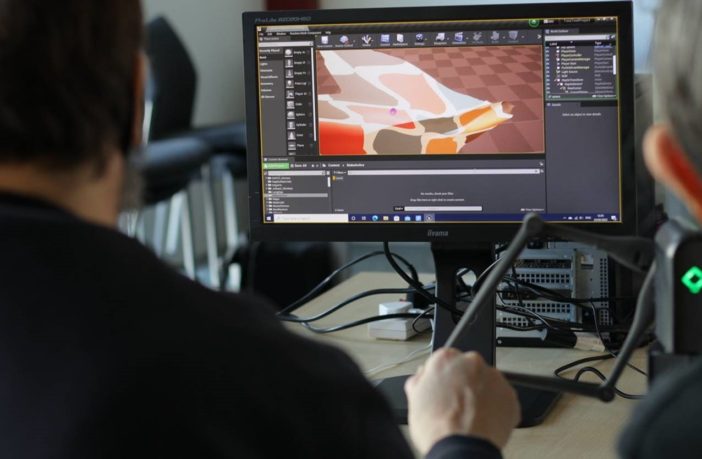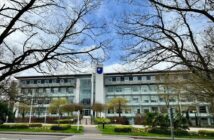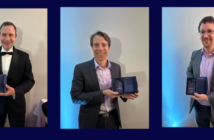Inclusivity driven OU academic, Dr Lisa Bowers, has discussed her collaboration MakeActive, an exploration into using touch in creative industries to aid blind or visually impaired people.
As part of British Science Week, Dr Bowers and Dr Alastair Barrow, CEO and co-founder of Generic Robotics Ltd. will be presenting their project in an online discussion on Tuesday 15 March (12.30pm-1.30pm). The event is free and it is quick to register attendance online.
For the sight-impaired creative community, making use of design programmes or systems can be incredibly difficult due to their image-centric nature. This barrier can make it incredibly difficult for creatives from this community to gain equal access and often limits their digital skills and development.
Drawing on extensive expertise in user-led studies and augmented reality (AR) systems, the team aims to develop a dynamic touch-based system (known as haptics) that seeks to resolve issues related to access to computer aided design (CAD) for the sight-impaired creative community by exchanging sight for touch and sound.
Dr Barrow commented on what technology could mean to those with sight impairments:
“For designer-makers with sight impairments, there are clear barriers to using computer-aided design (CAD), due to the very nature of using visual queues for creating. This project aligns novel and futuristic touch-led technologies to break down barriers to CAD for people in this community.”
At the OU, Dr Lisa Bowers has a role as Accessibility Lead, alongside teaching and managing duties within the faculty of Engineering and Innovation. As an inclusive designer, Lisa has worked with the NHS, Kings Fund projects and various disability charities across the UK and Ireland.
More recently Lisa has contributed to the OpenSTEM Laboratories portfolio at The Open University, trialling haptic facilitation for non-sighted undergraduate design students, thereby overcoming sight-impairment barriers to learning in applied disciplines.
Dr Bowers added:
“The title MakeActive describes a ‘virtual studio’ where all users can work together collaboratively to design and construct.
“The project will ultimately afford non-sighted and sight impaired users to work alongside their sighted peers, enabling accessible creation and ideation.”
Dr Alastair Barrow is co-founder and CEO at Generic Robotics Ltd. Alastair has worked at and with many of the top UK research institutions in a variety of capacities, heading up the technology development of large-scale projects.
On the project, Dr Barrow said:
“MakeActive is a unique collaboration between the OU and GR and one coming at a really pivotal time for not only the haptics industry, but the wider digital community, especially in education and the arts.
“The rapid march towards “digital-everything” is leaving many in our community, and in certain disciplines, behind due to the lack of provision for the sense of touch in the digital realm.
“There is arguably no more important use for this technology than to enable those who have limited ability to engage with traditional graphical user interfaces, e.g., those with significant visual impairments, to literally pickup where they left off and communicate their ideas with colleagues, sighted, non-sighted or otherwise, through intuitive self-expression via the medium of touch.”



